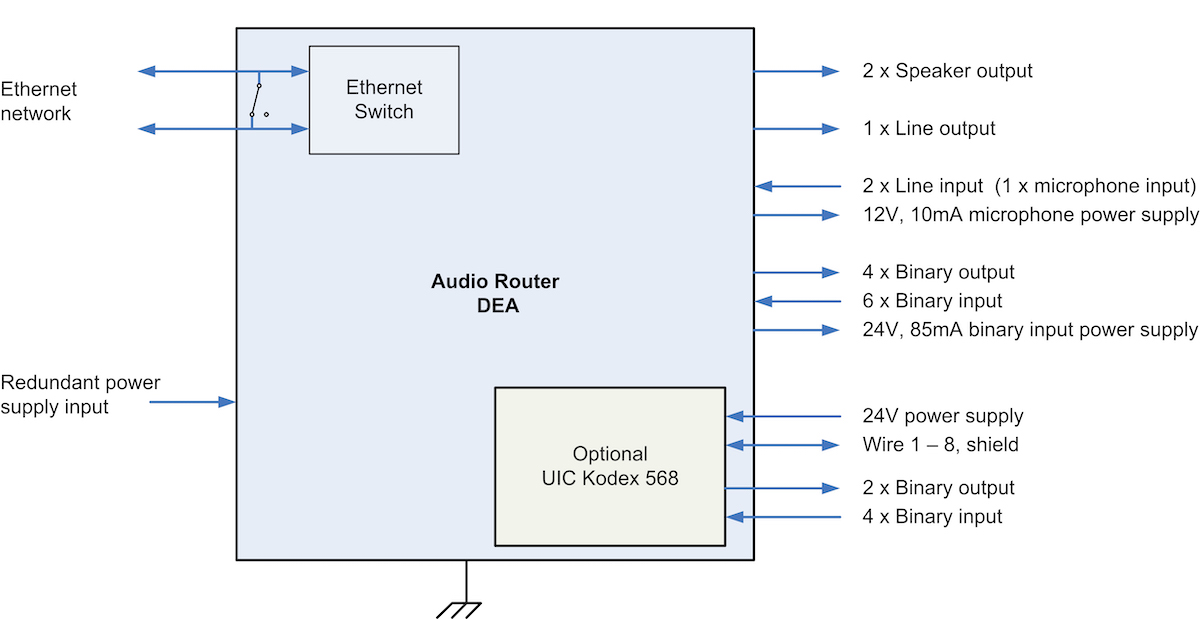
The decentralized audio hub, or VisiWeb DEA, is an audio router that sends and receives audio signals and allows the connection of numerous input and output devices. Typical applications include the integration of microphones, handsets and loudspeakers in the overall system. The audio hub is individually addressable so that selective announcements are possible.
The VisiWeb DEA can be easily connected to UIC cables. Binary inputs and outputs allow the connection of switching contacts. For instance, the conductor can select loudspeaker circuits via simple switches and initiate selective announcements. Various currents ranging from 24 V to 110 V are available.
 The small size and low weight are especially advantageous in refit projects as well as in new vehicles with limited space, allowing installation in a door post or the ceiling. External audio sources (e.g. MP3 players) can be connected via line-in interfaces to broadcast customized content, an option that is especially helpful on added trips or for tour groups.
The small size and low weight are especially advantageous in refit projects as well as in new vehicles with limited space, allowing installation in a door post or the ceiling. External audio sources (e.g. MP3 players) can be connected via line-in interfaces to broadcast customized content, an option that is especially helpful on added trips or for tour groups.
In contrast to a centralized audio solution with loudspeaker cables running throughout the train and across the passages between cars, only a single, extant Ethernet connection is required for the decentralized VisiWeb DEA, saving on cabling and allowing flexible configuration. Thanks to their modular construction and flexible configurability, audio hubs can be adapted to nearly any requirements on a train.
Technical data
Network
Audio
Binary inputs and outputs
Temperature range
|
Nominal voltage
Power consumption
Fire protection
EMC
Standards
|

